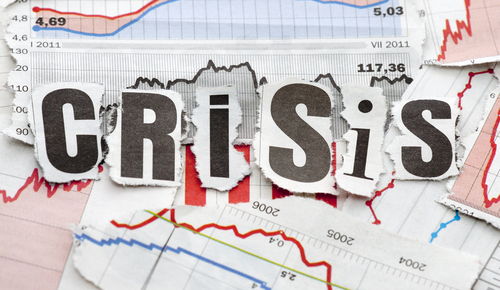Impending Economic Crisis: Signs to Look For
- Central Banking Policy Indicators
- General Market Instability
- Yield Curve Inversion
- Indicators in Residential and Business Construction Rates
- Regional, Real-Life Instability
No matter the time in history, when a financial crisis strikes, the consequences are often wide spread and devastating. Avoidance of all possible, negative repercussions is in the best interest of everyone involved. Are you interested in the financial patterns of the markets or the signs to look for when trouble may be brewing? The following five indicators represent some of those that all who are in-the-know should remain vigilant of.
Central Banking Policy Indicators
The Central Bank, also known popularly as “The Fed”, is an intimately close component to the U.S. financial systems and markets. As a result of this closeness, when certain actions and statements come from the Central Bank, substantial consequences often follow in the markets, for better or worse. In general, when the Central Bank is offering extra low percentage rates and other great deals, it’s a sign of troubled times being addressed. On the other hand, if the Central Bank has been in a recent trend of raising rates, then suddenly stops or reverses courses, this is also a sign of troubled financial times to come.
General Market Instability
The investor who notices periods of general market instability would also be correct in assuming this to be a sign of an impending economic crisis. When financial markets show greater levels of instability than usual, it generally means that great change is in the air. This can eventually translate to very positive financial results, but often only after some major losses and adaptive growing pains that must accommodate the changing times.
Yield Curve Inversion
Next to look for among the various signs of impending financial crises is the tell-tale yield curve inversion. As described by the money experts at Investopedia, the yield curve is a plotted line that shows bond interest rates. When this curve becomes inverted, it means that a greater demand for long-term bonds over short-term bonds exists. Investors are reacting to perceived, oncoming recession. An inverted curve has been seen just before nearly every major economic crisis has occurred in the modern era.
Indicators in Residential and Business Construction Rates
Residential and business construction rates also indicate good and bad times to come. That’s because these rates are highly reactive to consumer confidence at any given time. When things are going well, these rates boom. When things aren’t so great, consumers react strongly here. These are often the first areas of the markets to then indicate certain trouble ahead.
Regional, Real-Life Instability
Finally, when there is general, real-life instability taking place, the markets will almost always react directly to those incidents. All these can all impart havoc on the financial markets around the globe:
- Famine
- disease
- violence
- political falls and revolutions
- natural disasters
- other, similar events
A recent Investopedia article was published on this very subject and how the effects of real-world events can completely render markets as big as the world’s largest, The FOREX.
Conclusion
Financial crises can have very real and devastating effects on entire economies as well the countless individuals they are composed of. Being able to recognize a disaster scenario before it happens can often be key to making it out on the other side as unscathed as possible. These five markers of an impending financial crisis are among some of the most important to keep a lookout for in the spirit of proactive financial awareness.
Related Resources:

